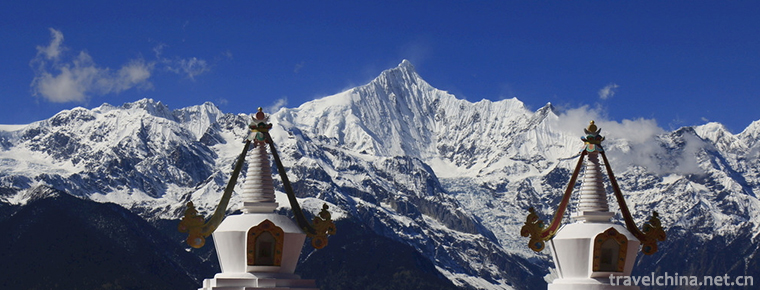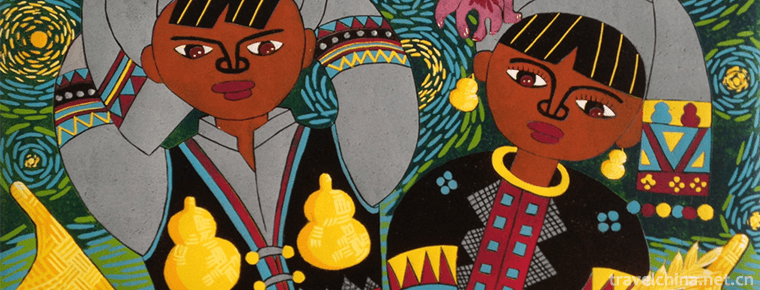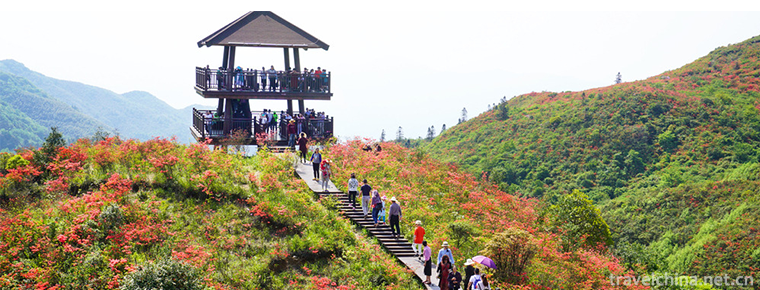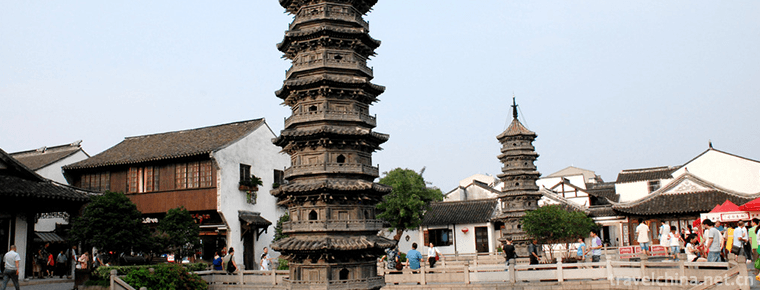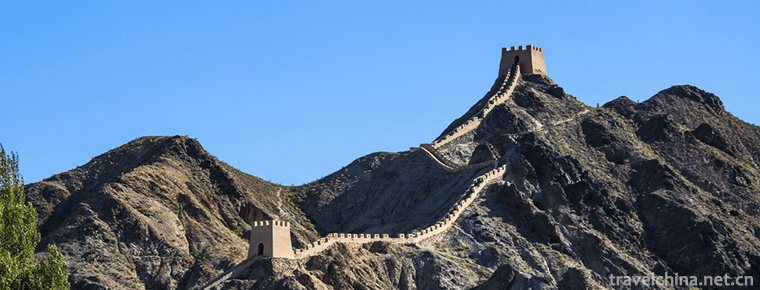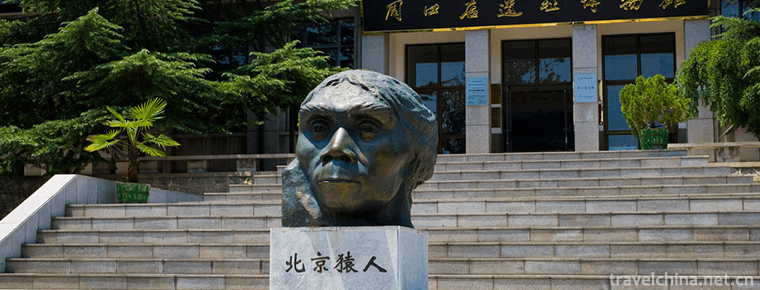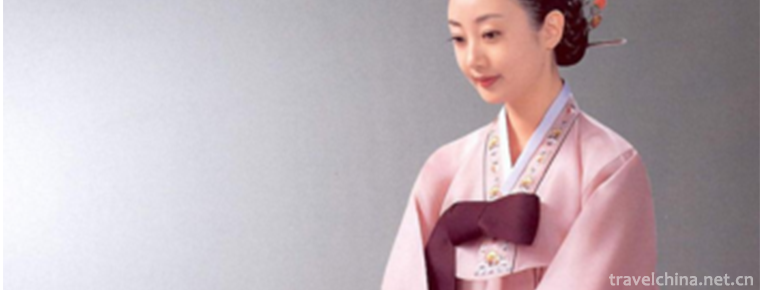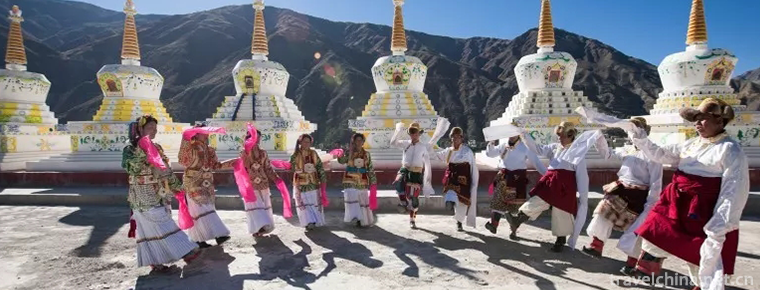Chaozhou Music
Chaozhou Music
Chaozhou music is the general name of all kinds of traditional folk instrumental music spread in Chaoshan area of Guangdong Province, referred to as Chaozhou music. Chaozhou music is characterized by its simplicity, elegance and graceful lyricism. Its main instruments are percussion instruments such as two strings, erhu, dulcimer and gongs and drums. Chaozhou music has retained a lot of Southern sounds and ancient rhymes, which has attracted more and more attention in the world. It originates from local folk songs, songs and dances, minors, and absorbs the materials of Yiyang, Kun, Qin, Han, Dao and Fa tunes, which are compatible and self-contained. It is rich in variety and can be roughly divided into two categories: square music and chamber music.
On May 20, 2006, Chaozhou Music was approved by the State Council to be included in the first batch of national intangible cultural heritage list.
historical origin
Chaozhou music is the general name of all kinds of folk instrumental music spread in eastern Guangdong. In addition to Eastern Guangdong, Chaozhou music is also widely popular in southern Fujian, Guangzhou, Shanghai, Taiwan, Hong Kong, Macao and other countries in Southeast Asia and Chaozhou settlements. Chaozhou is the center and birthplace of Chaozhou music. Its origin can be traced back to the Tang and Song Dynasties and matured in the Ming and Qing Dynasties.
background
Chaozhou music has a long history. It has a close relationship with the history of ancestors and cultural development in eastern Guangdong. The ancient Chaozhou in the Spring and Autumn Period was called Nanman and Baiyue, and it was the residence of the ancient Yue (Minyue) people. But there was bronze culture at that time, which showed that the Central Plains culture had penetrated here. Bronze culture and cultural relics of Shang and Zhou Dynasties are often found in ancient Chaozhou tombs. Chaoyang District and Huahu Town, Huilai County, once produced a copper bell, which is a musical instrument of temple hall and belongs to the culture of the Western Zhou Dynasty. The bronze drums of the Western Zhou Dynasty were salvaged from the seashore of Shenquan Port in Huilai County, which shows that the ancestors of ancient Chaozhou had already used the cultural objects of Shang and Zhou Dynasties. Due to the historical experience of "Yongjia Rebellion", "Anshi Rebellion" and "Jingkang Difficulty", the Han people in the North Central Plains migrated to the South on a large scale. For example, in the first year of Jin Dynasty, Shanxi and Shaanxi residents who moved southward with Emperor Jin and Yuan settled in Jiangsu and Zhejiang, then moved to Fujian in order to escape the flames of war; in Tang Xuanzong's time, in order to prevent frontier Japanese aggressors, there were also residents who moved southward to Fujian. Later, after several military disasters in the late Tang, Song, Yuan and Ming Dynasties, there were historical facts of large-scale migration southward, and they lived in Zhangpu, Jiangxi, Fujian and other places successively. Into the tide. Therefore, it is self-evident that the music culture of the Central Plains, which came with the people, is spreading into the tide. During the Qianlong reign of the Qing Dynasty, a foreigner named Meng Liangmai came to the tide and wrote a poem called "Chaozhou Bamboo Branch Ci": "From the beginning of the New Year, spring will be set foot, and the green suburbs will be covered with fragrant dust for ten miles. Blame him for his different customs and elegant skirts. The Ci poems can reflect the historical facts that the descendants of Han people in Central Plains live in Chaoshan area. Until Qin Shihuang unified China to send troops to Baiyue and set up Jieyang guard area, Qin General Shilu and his family later resided in Jieyang, which also brought the Central Plains culture into Baiyue. The assimilation process of the ancient Chaozhou ancestors and the Han people in the Central Plains gradually merged into the Han family. It also accelerated the mutual penetration and integration of the music culture of the Central Plains and the music culture of the indigenous people in Chaozhou. This is the accumulation of history and culture, but also the source of Chaozhou music.
Development
Tang and Song Dynasties are the formation period of Chaozhou music, and Ming and Qing Dynasties are the evolution and development period of Chaozhou music. In the Tang Dynasty, music and art flourished unprecedentedly. At that time, Chaozhou, like other prefectures and counties in the south of the Yangtze River, had gradually entered the rising stage of cultural development. The sound of silk and bamboo blowing pipe, bells and drums, and the sound of bells and drums were well known in Chaozhou. Xiyan Temple was built in the west of Chaoyang County in the Jin Dynasty, and Buddhism prevailed unprecedentedly in the Tang Dynasty. Chaozhou built Kaiyuan Temple in the 26th year of Kaiyuan in Tang Dynasty (238), and Lingshan Temple in Chaoyang in the 4th year of Zhenyuan in Tang Dezong (788) in 791. Since then, many temples have been built in various parts of Chaozhou Prefecture. As Buddhist music in the Central Plains became popular, Chaozhou and Chaoyang temples became the largest distribution centers of Buddhist music at that time. Chen Zheng-sons (He Nan people) who believed in Pingdingquan and Chao Man bureaucratic riots in Tang Gaozong were music officers. Chen Zheng-yuan-guang, the son of Chen Zheng-lang in Sui Dynasty, was proficient in music, and he had been caressed by Zhangzhou Town (governing tide and spring) for music and Wuhanization. Chaoquan is famous for its two prefectures. Chen Yuanguang once chanted: "Qin Xiao blew to attract phoenix, Zou Lv played spring, dim and silky songs were repressed, and beautiful dancing gods were whispered. "Describe banquet music, singing and dancing. When Han Yu demoted the tide in the mid-Tang Dynasty, there were music activities of people sacrificing gods. In his collection of Han Chang Li Wen, Han Yu narrated the folk sacrificial activities of Chaozhou in the Tang Dynasty, which included: "blowing drums and playing drums, you Xiangjie", "you thank gods with your voice", "Gong Zhai wash, playing the voice" and other famous phrases. History records also recorded that Chao "all officials advocate piano and serge, emphasizing music to govern the people".
Chaozhou in the Song Dynasty witnessed a great success in sacrificing Confucius. According to "Yongle Dadian" and "Sanyang Zhi", collected by Mr. Rao Zongyi abroad, the Dacheng Hall of Xuansheng Temple, which was dedicated to Confucius, was rebuilt in Jiading in 14 years to restore the old system of clouds. Since the Song Dynasty, Chaocheng Confucian Temple has held rituals of sacrifice to Confucius every year in mid-spring and Mid-Autumn to perform Dacheng music. The instruments used include bells, sixteen fragrant chimes, pianos ranging from one string to ten yellow pieces, Sheng, Se, Fengxiao, etc., which were first performed by scholars and played by folk musicians during Chunxi's reign. It can be seen that the performance line-up is huge and regular. This is the ritual music advocated by Confucian culture at that time. It is the music of Dasheng Prefecture in Song Dynasty. Its original name is Dasheng Music. It was also the elegant music used in the ancestral temples at that time. This is the proof of the spread of ancient music in Chaozhou.
In the late Southern Song Dynasty. Song Emperor fled south, and Wu Bin, a scattered doctor of the left Tibetan Dynasty of the Song Dynasty, arrived at the tide with Wen Tianxiang's diligent division. Wu Bin was a court musician with musicians, geishas and ritual music. Later, Wu Bin settled down in Chaoyang. In the Ming Dynasty, Li Ling (a native of Chaoyang Miancheng) returned home to build a school palace in Chaoyang to spread court music; and Chen Chunlin, who was later Deputy envoy of Guangxi, was honored by the imperial court for his meritorious service in making peace with his toes. When he returned home to Chaoyang Miancheng, the holy God gave a group of musicians and Kabuki to accompany him. This is an example of the ups and downs of music in the Central Plains in the Song and Ming Dynasties. Therefore, Chaoyang is famous for its flute set music with Sheng, Xiao, Guan and Flute as its main instruments. "Chaoyang County Chronicle of Customs" has a record date: "Although the emperor's village is not the Tang and Wei Bi, but it has been deepened, only when it reached its peak, chord songs reached the four borders... "It can be seen that Chaoyang music was in vogue at that time. On the other hand, there are five ridges in the north of the coast of the South China Sea, which makes the ancient voice of the Central Plains more completely preserved here.
During the Ming and Qing Dynasties, the city was more prosperous, the town trade and handicraft industry in Chaozhou (prefecture) also developed, and the population grew larger. At that time, operas, lyrics, rap, silk and bamboo music, and advocacy music adapted to the life of the citizens were more prosperous. These folk music clubs and artists were often invited to perform at festivals. In addition, semi-professional organizations such as "the first Hall of blowing" and "the eight-tone hall" were also widely set up in the towns and townships. They mostly do red and white things for the people and play drums and music as their career. These music halls organize performances at festival celebrations or spirit fairs, each showing their superior artistic choices and often competing on stage. Therefore, Chaozhou (prefecture) enjoys the reputation of Jieyang "patting chickens" (music title, Chaozhou dialect "patting chickens" or "fighting chickens"); Haiyang "biting geese" and Chaoyang "winning order" (opera title) are representative performances of various places, and are recognized by the masses as exquisite skills. Art. At that time, there were also professional paper and shadow classes, puppet performances. These accompanying musicians often imitated the singing tune and played "Hequ" (suona "card opera"). They were famous for playing "Waijiang Opera". Jieyang Master was famous for his double-blowing skills, attracting people's attention. Various kinds of music added rich content to the music life of the people in Chaozhou (prefecture).
Since Ming and Qing Dynasties, foreign (provincial) operas have broken into the tide, and commercial performances have been very frequent, which has injected new blood into Chaoyin operas. Chaozhou music has a deeper artistic nourishment. It can be said that the influence from this aspect is greater and the benefits are not shallow. For example, Zhengyin Opera (Southern Opera) in the late Ming Dynasty (Zhengyin Opera) from Eastern Zhejiang, southern Jiangxi to southern Fujian to Zhao'an, Dongshan counties to Chaozhou (Mansion); Huagu Opera in the Western Qin Dynasty passed through Hunan, northern Guangdong, Huiyang, Haifeng and Western Fujian through Jiaying Prefecture of the Hakka nationality to Chaozhou (Mansion); in addition, Kunshan Opera, Yiyang Opera, Guilin Opera and other types of opera also entered the tide; Zhengyin Opera, Youqin Opera, Waijiang Opera had already entered Chaozhou (Mansion) and Chaozhou (Mansion) in the Qing and Qianlong Dynasty. The settlements of Haifeng, Lufeng and Xingmei have gradually evolved, which has a profound influence on Chaoyin Opera. Especially Zhengyin Opera has a set of deep percussion traditional techniques and rich and complete music. Chaozhou Gong and drum "throwing net fishing" originally originated from the music of Gong and drum accompaniment of Zhengzi Opera "Erdumei", which has been adapted and sorted out. The gongs and drums Chasing Boat, Ten Immortals Celebrating Birthday, and Throwing Chai were also born out of orthographic gongs and drums accompanying music. Dagong and drum "Qinqiong Down Bronze Banner" is derived from the legendary martial arts and white character Gong and drum accompaniment music of Western Qin Opera. Waijiang Music is the music of Han Opera (before the founding of New China, it was called Waijiang Opera), so it is also called Han tune. Its music component includes the North-South combination of the plate-cavity and the leatherleaf tune, with high-spirited and bold spirit, while percussion music is characterized by Su Gong and drum accompanying music. Chaozhou Dagong Drum "Lantern Tower" also absorbs the percussion music of Waijiang Opera. The main performance of Waijiang Music (Han Diao) is string music. At the time of Qing Guangxuan, it was popular all over the world, especially among literati, nobles and scholars. It was elegantly called Confucian music and national music. In Chaozhou (prefecture), this kind of sandalwood board clear tone can be heard everywhere. Chaozhou music can play Chinese tune. There are many famous musicians. The influential figures are Hong Peichen, Wang Zeru, Rongzhen, Ding Hongye, Cai Shaomei, Liu Longyan, Zheng Yingmei, Li Jiaying, Rao Shushu, Wei Song'an, Fang Xiulun, Zhang Hanzhai, Hong Ruyan, Yu Yonghong, Hong Binghe, He Tianyou, Lin Yubo, Xu Dasheng and so on. At that time, there were many music clubs, such as Shantou's most famous "public welfare clubs", "to form a club", "swimming Huaitian" and "Yangchun Secret" in Chenghai, Rongjiang, Punan Xuan, Yanan Xuan in Jieyang, Juntian in Puning, Nien clothes chanting in Anbu, Anjiang, friendship voice, Yangfeng and Yirong in Chaozhou.
Inheritance significance
After the founding of New China, Chaozhou music has developed vigorously. In the early 1950s, Shantou Chao Music Improvement Association and Chaozhou Folk Music Troupe were established. In 1956, Chaozhou Music participated in the whole country in Beijing.
In 1957, at the World Youth Festival, Chaozhou Gong and drum "throwing net fishing" won the gold medal. Some musicians and music units have come to Chaozhou (prefecture) to investigate and collect styles, and to trace the footprints and sounds of Sui and Tang music from Chaozhou music.
Chaozhou Folk Music Selection and Chaozhou Music Collection were published after the 1960s; representative instrumental music works reflecting real life included Chunman Fishing Port, Celebrating Victory, Happy Sending Bulk Grain, Song of Sending Grain All the Way; and compiled music such as Guan Gong Passing Five Passes, Double Bite Goose, Chasing the Boat, etc.
The state attaches great importance to the protection of intangible cultural heritage. On May 20, 2006, Chaozhou Music was approved by the State Council and listed in the first batch of national intangible cultural heritage list.
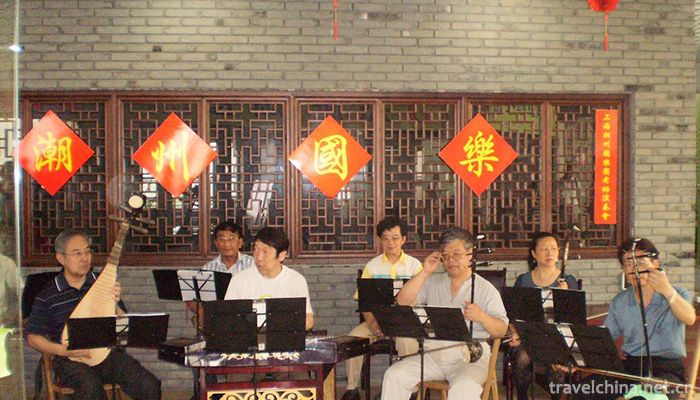
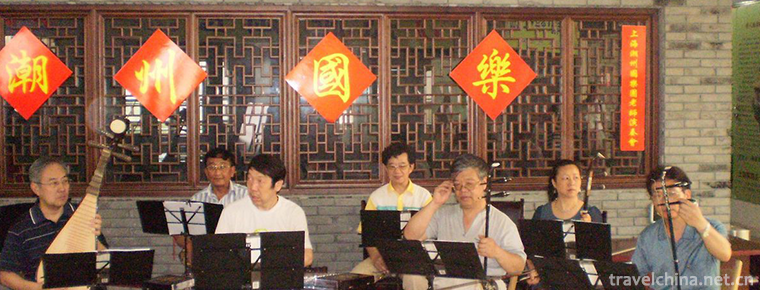
Chaozhou Music
-
Meili Snow Mountain
Meili Snow Mountain, located in the eastern part of Chayu County, Tibet, and the western part of Jingyunling Township, Deqin County, Diqing Tibetan Autonomous Prefecture, Yunnan Province
Views: 243 Time 2018-11-13 -
Mupa Mipa
Mupa Mipa, a local traditional folk literature in Simao City, Yunnan Province, is one of the national intangible cultural heritage.
Views: 376 Time 2018-12-15 -
Daweishan National Forest Park
Dawei Mountain is located in the boundary between Hunan and Jiangxi Province, the hinterland of Lianyun Mountains, the East is Tonggu County under the jurisdiction of Yichun City, Jiangxi Province
Views: 158 Time 2019-01-07 -
Nanxiang ancient town
Jiading Nanxiang Ancient Town is a national AAAAA scenic spot, located in Nanxiang Town, Jiading District, Shanghai. There are famous scenic spots such as brick pagoda, Guyiyuan, Hebi Mountain, Liuyun
Views: 142 Time 2019-02-07 -
Overhanging Great Wall
The hanging wall of the Great Wall is located on the northern slope of the Heishan Mountains on the north side of Shiguan Gorge, 8 kilometers north of Jiayuguan City
Views: 187 Time 2019-02-26 -
Peking Man Site at Zhoukoudian
Zhoukoudian Peking Man Site, located in Longgu Mountain, Fangshan District, Beijing, is an important Paleolithic site in China. Since 1927, three complete skulls and some remnants have been found in t
Views: 135 Time 2019-03-20 -
Korean Costume
Korean costume, Korean traditional folklore, one of the national intangible cultural heritage.
Views: 158 Time 2019-04-16 -
De rong xue qiang
Derong Xueqiang is a folk dance popular in Waka Township, Derong County, Ganzi Prefecture. Its movements are strong, simple and generous, its next steps are strong and its feet are crisp
Views: 219 Time 2019-04-26 -
Legend of Liu Bowen
Liu Bowen's legend is based on the traditional folk oral literature of Liu Ji, a historical figure, spread throughout the whole country in eastern Zhejiang, with Qingtian, Wencheng and other southern
Views: 433 Time 2019-05-13 -
Beijing Normal University
Beijing Normal University is a key university directly under the Ministry of education. It is a famous university characterized by teacher education, educational science and liberal arts basic subject
Views: 192 Time 2019-09-06 -
Former site of Brazil Conference
The former site of the Brazil conference, formerly known as Banyou temple, is located in Brazil township of Zoige county (which belonged to Songpan County before 1956) at the southeast border of Aba Prefecture and Gansu Province. It is near the edge of grassland and is a semi agricultural and semi pastoral Tibetan inhabited area, 32 kilometers east of Zoige county.
Views: 126 Time 2020-11-07 -
Leshan Sports
In 2018, Leshan City organized a team to participate in the 13th Sichuan Provincial Games and won 19 gold medals, 25 silver medals and 47 bronze medals. 63 provincial-level sports fitness projects were established, and 279 municipal level national fitness
Views: 320 Time 2020-12-17
